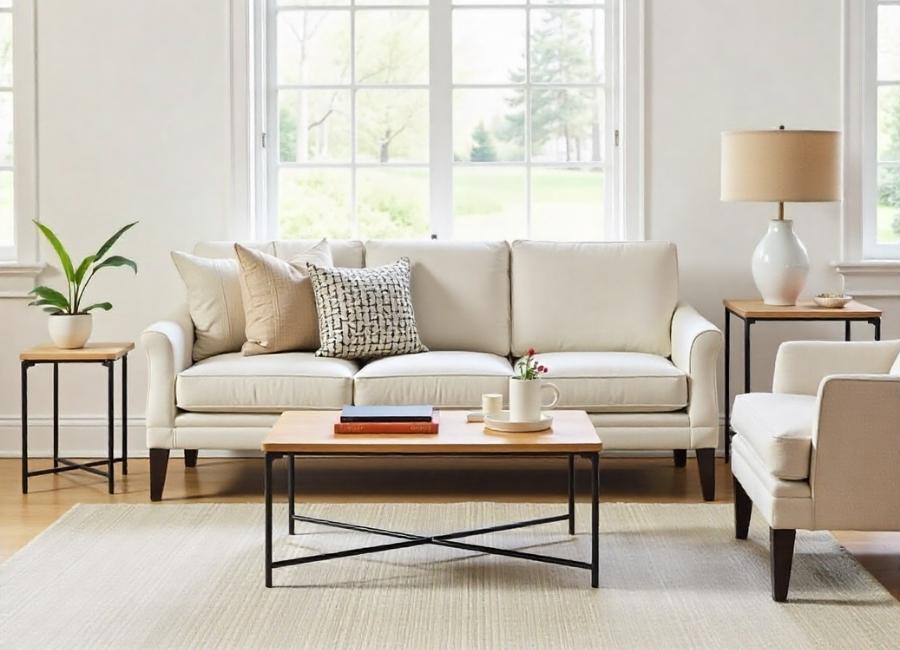A coffee table does more than hold your drinks and magazines—it often becomes the focal point of your living room. Picking the right height can make your space look better and work better, too. If you’ve ever wondered, “How tall should my coffee table be?” you’re in good company. Many people ask this when setting up their living room, since the right height helps everything feel balanced and comfortable.
In this post, we’ll look at what to think about when picking the right size for your coffee table. You’ll find standard heights, design tips, and practical advice to help you choose a table that fits your space perfectly.
What to Consider When Choosing a Coffee Table
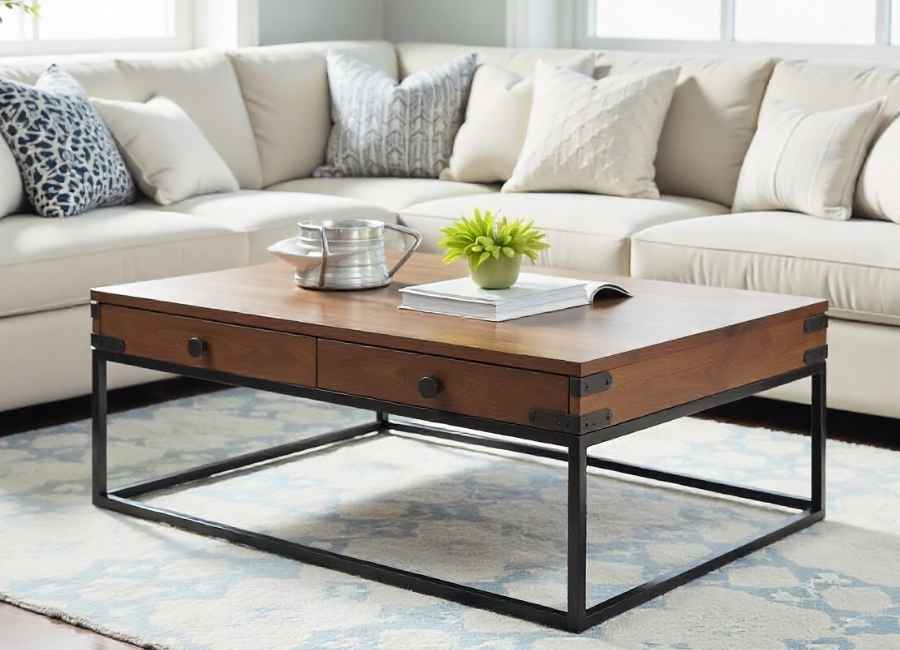
Height is just one thing to think about when picking a coffee table. The table you choose should go well with your other furniture and add to your living room’s style. Here are the main things to keep in mind as you decide.
Height: The Key to Balance
The height of your coffee table helps keep your living room balanced and comfortable. A table that matches the height of your seating, especially your sofa, will look and feel just right.
As Catherine McColly, designer for Perigold’s Design Services, explains, “For an appropriate visual hierarchy, each person should be seated at the same vertical level.” Ideally, your coffee table should be around the same height as the cushions of your sofa. This ensures that it’s easy for everyone to reach the table from their seat, whether they’re placing a drink or putting down a book.
Most coffee tables are between 14 and 20 inches tall, with 17 to 18 inches being the most common. (Coffee Table Ideal Height: How Tall Should Yours Be?, n.d.) Tables outside this range are less common, but you can still find them if you have special requirements.
Width and Length: Scale Matters
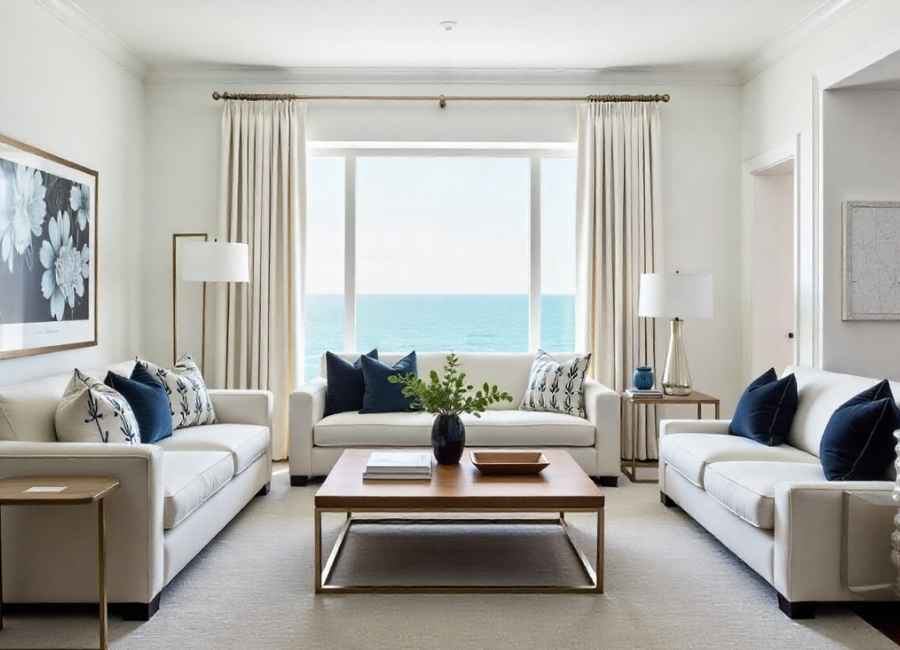
When choosing the width and length of your coffee table, think about how it will fit in your living room. The table should match your seating area and not take up too much space.
Nina Venice, associate design director at Four Hands, recommends that your coffee table be roughly two-thirds the length of your sofa. A smaller table might seem too insignificant, while a table that’s too large can overpower the room and block movement. It’s important to ensure that your coffee table doesn’t obstruct the natural flow of the space and that it complements the scale of the rest of the furniture.
Placement: Where to Position Your Coffee Table
After you’ve picked the right size for your coffee table, think about where to put it. A good rule is to place it about 17 inches from your sofa. (Measuring Up: Living Room Design, 2025) This gives you enough room to move and reach the table easily.
Of course, this depends on your room’s size and shape; you might need to adjust this distance a bit. Still, 17 inches usually works well for both comfort and convenience.n: Match Your Coffee Table to Your Room’s Aesthetic
The style of your coffee table should match your existing furniture. If you already own a sofa and a set of chairs, use these as your design anchors. McColly advises, “Aim to match your coffee table to these anchors and stay within the same general style.” For instance, if your living room features a modern aesthetic, select a sleek, minimalist table. On the other hand, if you have a more traditional setup, a wood or metal table with intricate details may be a better fit.
Material: Personalize Your Coffee Table Choice
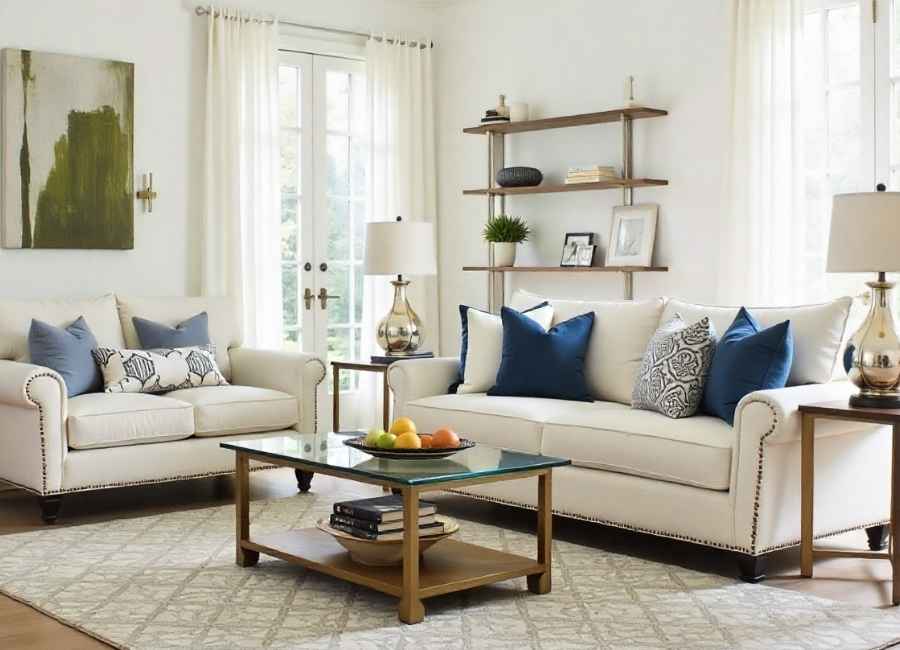
The material you choose for your coffee table matters as much as its design. McColly says picking the material is a very personal choice because it changes the look and feel of your room. Before you decide, consider what kind of mood you want in your living room.
- Wood is a favorite because it’s warm, versatile, and long-lasting. (10 Reasons to Choose a Solid Wood Coffee Table for Your Home, n.d.) Whether you pick oak, walnut, or reclaimed wood, it usually fits well with most Home styles.
- If you like an industrial style, a metal coffee table with simple lines can look great in a modern or city-inspired room.
- Glass coffee tables are a good choice for small rooms because they look light and don’t take up much visual space, but still give you plenty of room on top.
Shape: Choose the Right Shape for Your Space
Coffee tables come in many shapes, like round, square, rectangular, oval, or even unusual designs. Pick a shape that fits your space and matches your seating style.
- Rectangular tables are most common and are ideal for larger seating areas. (Rectangular Coffee Tables for Living and Family Rooms, n.d.)
- Round tables are perfect for small spaces and can soften the look of a room with sharp edges.
- Square tables work well in symmetrical layouts, especially when paired with matching seating arrangements.
Standard Coffee Table Heights
Here are the three common categories of coffee table heights you’ll encounter:
- Standard Height: Most coffee tables range between 14 and 20 inches tall, making them suitable for most seating arrangements. (How High Is a Standard Coffee Table: Tips for Finding the Perfect Height for Your Living Room, n.d.) This height is ideal for traditional sofas and chairs.
- Low Profile: If you have a low-to-the-ground sofa, a coffee table that’s lower than the standard height (around 12 to 14 inches) may work best. Low-profile tables create a sleek, modern look and work well in minimalist spaces.
- Tall Coffee Tables: If you own a tall sofa or want to make a bold statement, consider a tall coffee table that sits above the standard height. Tall coffee tables typically measure 20 inches or higher and work well with taller furniture styles. (How Tall is a Typical Coffee Table: Ideal Heights Revealed, n.d.)
Designer Tips for Choosing a Coffee Table
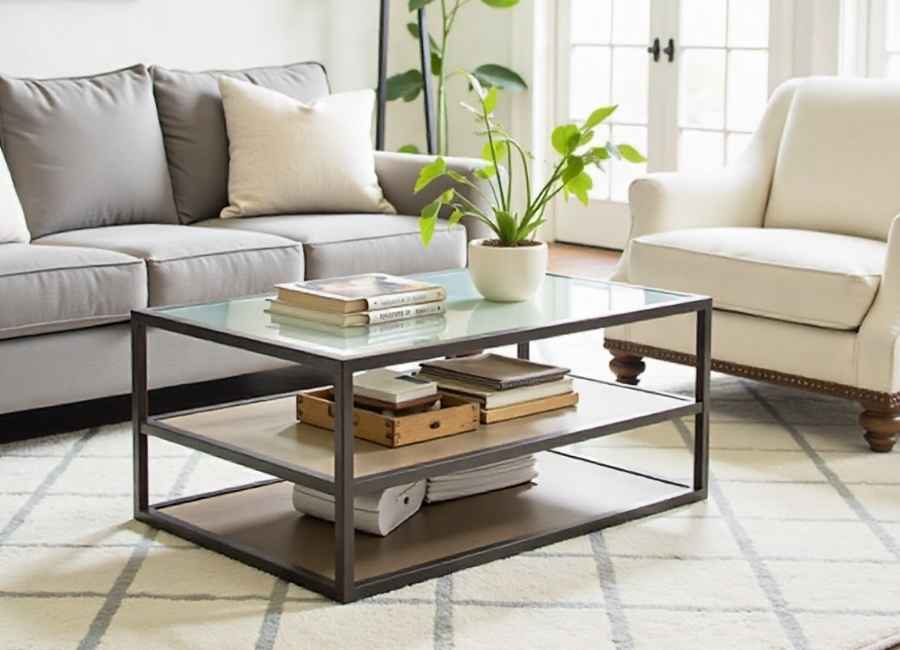
Here are some expert tips to help you pick the right coffee table for your living room: if it is on the smaller side, opt for a glass coffee table. Glass creates a sleek, unobtrusive look that allows the rest of the room to shine without crowding the space.
- Consider Storage Solutions: If you need additional storage, look for a coffee table with hidden storage or multi-tiered shelves. This allows you to store books, remotes, and other essentials without cluttering the room.
- Go Off the Beaten Path: If you’re looking for something more unique, consider a set of irregularly sized, smaller tables instead of a single coffee table. This approach works especially well in eclectic or bohemian spaces.
- Balance Your Living Room: Choose a coffee table that creates balance in your space. Consider mixing materials or incorporating unique textures to bring variety and interest to your design.
FAQ: Coffee Table Height and Size
What is the standard height of a coffee table?
Most coffee tables are between 14 and 20 inches high, with 17 to 18 inches being the most common height. (17 to 18 Inches Height Coffee Tables, n.d.)
How high should a coffee table be off the ground?
Coffee table height depends on the height of your seating. Ideally, it should be at or slightly below the level of your sofa cushions for comfortable accessibility.
How many inches should a coffee table be away from a couch?
A coffee table should typically be placed about 17 inches away from the couch for ease of access and to maintain visual balance. (How Far Should Your Coffee Table Be From the Couch for Optimal Comfort?, n.d.)
Conclusion
Picking the right coffee table height can make your living room more comfortable and stylish. Think about the table’s height, width, material, and style to find one that goes well with your furniture and looks great in your space. Whether you like a low, simple table or a tall, bold one, choose something that fits your needs and your taste.
For more design tips, inspiraWant more design tips and inspiration? Sign up for our newsletter to get the latest Home decor trends and expert advice.







